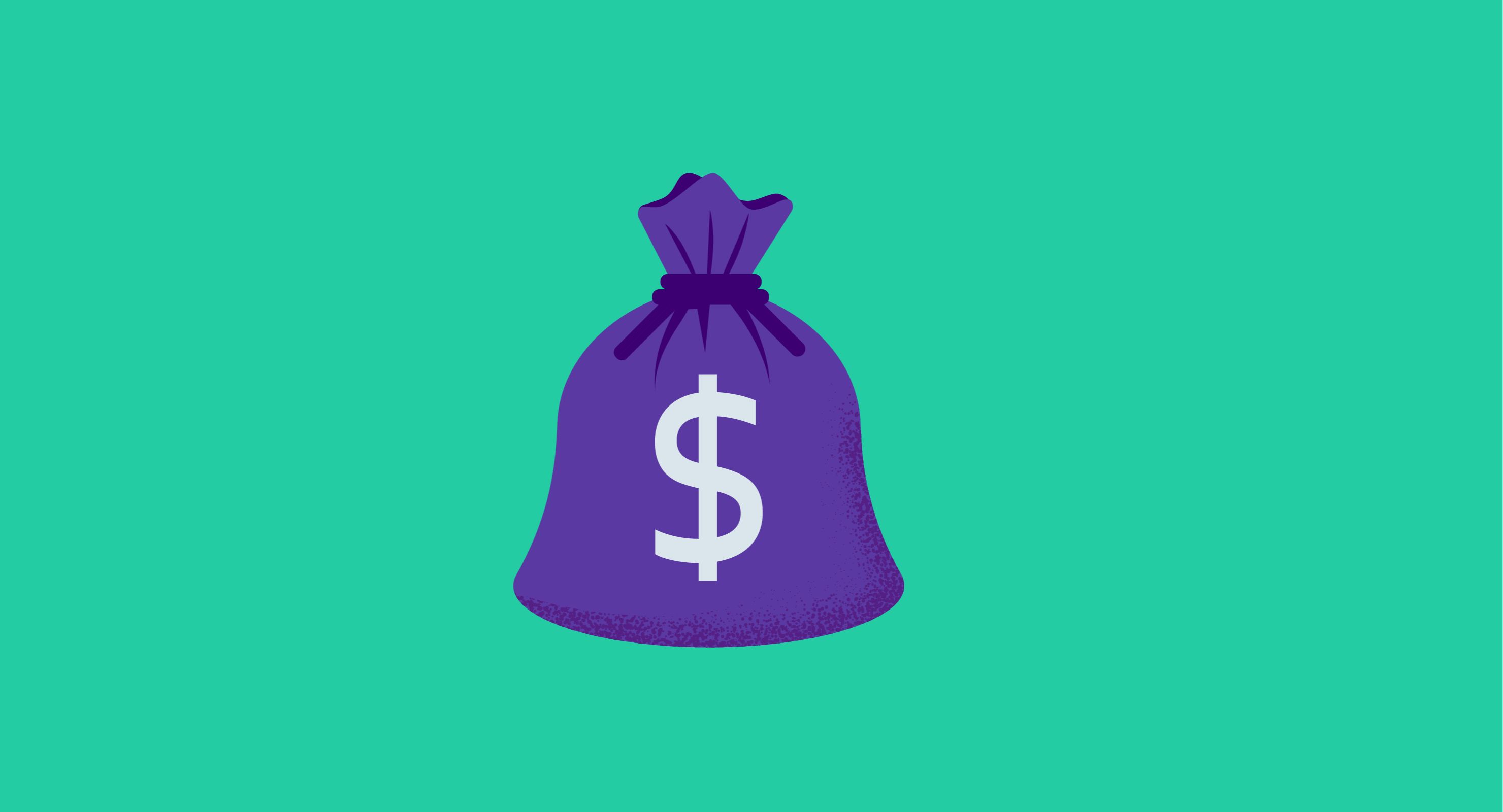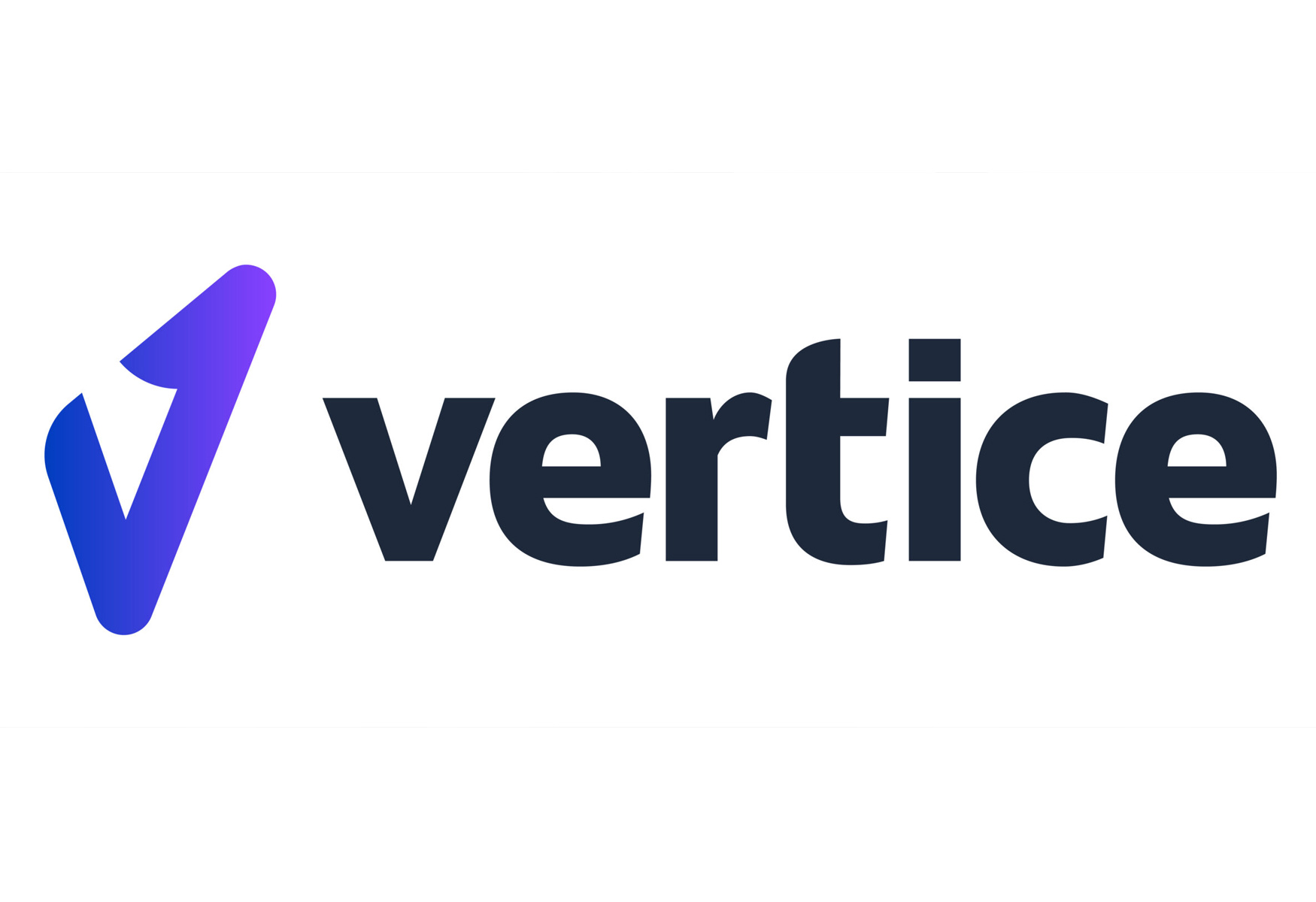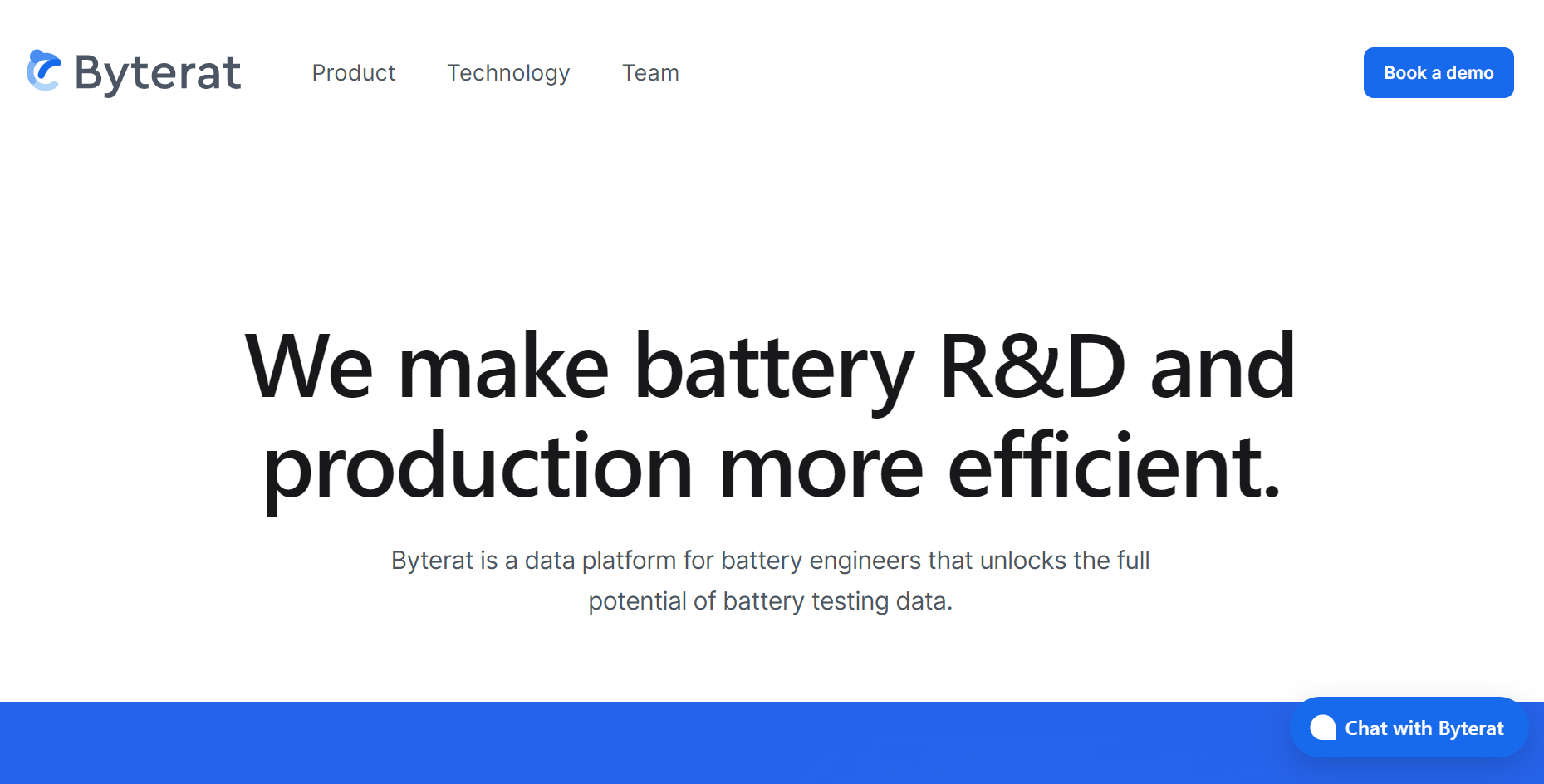Introduction
Welcome to the world of Software-as-a-Service (SaaS), where companies are increasingly turning to cloud-based solutions to meet their business needs. SaaS has become a popular choice among businesses of all sizes, offering a wide range of applications and services that can be accessed and utilized through the internet.
Over the years, the adoption of SaaS has skyrocketed, revolutionizing the way organizations manage their operations and empowering them with more flexibility and scalability. From project management and customer relationship management (CRM) to human resources and accounting, there is a vast array of SaaS solutions available to cater to various business functions.
But have you ever wondered how much companies actually spend on SaaS? In this article, we will delve into the world of SaaS spending and explore the factors that influence it, average spending by company size, industry-specific trends, and tips for optimizing SaaS spending.
While SaaS offers numerous benefits, it’s crucial for companies to have a clear understanding of their spending patterns to make informed decisions and ensure they are getting the best value for their investment. Let’s dive deeper into the world of SaaS spending and gain insights into this rapidly evolving landscape.
What is SaaS?
Before delving into the spending habits of companies, let’s take a moment to understand what exactly Software-as-a-Service (SaaS) is and how it works.
SaaS is a software distribution model where applications are centrally hosted and delivered to users over the internet. Instead of installing software on individual computers or servers, users can access these applications through a web browser, eliminating the need for complex installations and updates.
One of the key advantages of SaaS is its subscription-based pricing model. Rather than purchasing software licenses outright, companies pay a recurring fee to access and use the software. This subscription usually includes ongoing maintenance, updates, and support, ensuring that the software remains up to date and functional.
SaaS applications are typically multi-tenant, meaning that multiple users or companies can share the same instance of the software. This not only reduces costs but also allows for seamless collaboration and real-time data sharing across teams and departments.
Furthermore, SaaS offers a high level of scalability and flexibility. As the needs of a business change, it becomes easier to scale up or down the usage of the software, making it an ideal solution for companies experiencing rapid growth or fluctuations in demand.
SaaS also takes advantage of the cloud infrastructure, allowing users to access their software from any device with an internet connection. This mobility and accessibility make SaaS an attractive option for remote workforces, enabling employees to work from anywhere without limitations.
Examples of popular SaaS applications include Salesforce for CRM, Microsoft Office 365 for productivity tools, and Zendesk for customer support. These SaaS solutions, among many others, have revolutionized how businesses operate, providing efficient and cost-effective alternatives to traditional software installations.
Now that we have a good understanding of what SaaS is and how it functions, let’s explore why companies are increasingly turning to SaaS solutions and the factors that influence their spending in this area.
Why do companies use SaaS?
SaaS has gained immense popularity among companies across various industries, and for good reason. Here are some key reasons why businesses choose to adopt SaaS solutions:
1. Cost Savings
One of the primary reasons companies opt for SaaS is the potential for cost savings. With SaaS, businesses eliminate the need for expensive hardware infrastructure, software licenses, and IT personnel to manage and maintain the software. Instead, they can subscribe to the software as a service and pay a predictable monthly or annual fee, often based on the number of users or level of usage.
2. Scalability and Flexibility
SaaS offers unmatched scalability and flexibility. As businesses grow or experience fluctuations in demand, they can easily scale up or down their usage of the software. This agility allows companies to adapt to changing needs without large upfront investments or complicated infrastructure upgrades.
3. Accessibility and Mobility
One of the key advantages of SaaS is its accessibility. Users can access their applications and data from any device with an internet connection, enabling remote work and enhancing collaboration across geographically distributed teams. Whether it’s through laptops, smartphones, or tablets, SaaS allows employees to work seamlessly and efficiently from anywhere.
4. Continuous Updates and Maintenance
SaaS vendors are responsible for maintaining and updating the software, ensuring that users always have access to the latest features and security patches. Companies no longer have to allocate resources for software updates or worry about compatibility issues. This frees up IT teams to focus on more strategic initiatives rather than mundane maintenance tasks.
5. Integration and Compatibility
SaaS applications are designed to be highly compatible and integrate with other software. This allows for seamless data exchange between different systems, making it easier to streamline workflows and automate processes. Companies can leverage an ecosystem of interconnected SaaS solutions that work together to improve efficiency and drive productivity.
6. Focus on Core Competencies
By relying on SaaS solutions for non-core business functions such as human resources, accounting, or project management, companies can focus their efforts and resources on their core competencies. SaaS eliminates the need for building and maintaining in-house software solutions, allowing businesses to allocate their time and energy to strategic initiatives that drive growth and innovation.
Overall, the benefits of SaaS, including cost savings, scalability, accessibility, and integration capabilities, make it an attractive option for companies looking to streamline their operations and enhance their competitive edge. Understanding why companies choose SaaS sets the stage for understanding how their spending habits in this area emerge.
Factors influencing SaaS spending
The amount that companies spend on SaaS can vary significantly depending on various factors. Understanding these factors can shed light on the trends and patterns of SaaS spending. Here are some key factors that influence SaaS spending:
1. Company Size and Industry
Company size and industry play a significant role in determining SaaS spending. Larger organizations with complex operations and larger user bases may require more extensive and specialized SaaS solutions, resulting in higher spending. Similarly, industries with specific compliance requirements or unique operational needs may require specialized SaaS applications, leading to increased spending in those sectors.
2. Number of Users and Usage Level
The number of users and the level of usage also contribute to SaaS spending. Companies with a large number of users or high usage requirements may need to invest in higher-tier plans or additional licenses, resulting in increased spending. SaaS vendors often offer pricing models based on the number of users or the level of usage, so companies need to assess their requirements and choose the most appropriate plan.
3. Complexity of Functionality
The complexity and breadth of functionality required from a SaaS solution can impact spending. Some companies may require more basic features and functionalities, while others may need advanced capabilities and customizations. SaaS solutions with more sophisticated features and customization options often come at a higher cost, reflecting the additional value they provide.
4. Integration Requirements
If a company needs its SaaS solution to integrate with other software systems and applications, it may influence spending. Integration capabilities vary among SaaS vendors, and some may charge additional fees for extensive integrations. Companies should consider their integration needs and evaluate the associated costs when choosing a SaaS solution.
5. Contract Duration
The length of the contract can impact SaaS spending. SaaS vendors often offer different pricing options based on contract duration. Longer-term contracts may provide cost savings compared to month-to-month contracts. Companies need to assess their needs and weigh the benefits of short-term flexibility versus long-term cost savings when selecting a contract duration.
6. Specialized Features and Add-Ons
Some SaaS solutions offer specialized features, add-ons, or modules that provide additional functionality. These add-ons may come at an extra cost. Companies should carefully evaluate whether they truly need these specialized features and assess the potential return on investment before including them in their SaaS spending.
Considering these factors can help companies make informed decisions when it comes to their SaaS spending. By understanding the key drivers of SaaS spending, businesses can effectively allocate their resources to the most valuable solutions and optimize their overall software expenditure.
Average SaaS spending by company size
The amount that companies spend on SaaS can vary depending on their size and the complexity of their operations. Here is an overview of the average SaaS spending based on company size:
Small Businesses
Small businesses typically have fewer than 50 employees and more limited budgets. They often rely on SaaS solutions for essential business functions such as email marketing, project management, and accounting. On average, small businesses spend around $5,000 to $25,000 per year on SaaS applications. However, this can vary depending on the specific needs and growth stage of the business.
Mid-Sized Businesses
Mid-sized businesses, with employee counts ranging from 50 to 500, have more diverse requirements and often require more robust SaaS solutions. The average annual spending on SaaS for mid-sized businesses falls within the range of $25,000 to $100,000. This higher spending is primarily due to the need for more advanced functionality, increased user licenses, and integration capabilities.
Enterprise-Level Businesses
Enterprise-level businesses, with over 500 employees, have complex operations and require comprehensive enterprise-grade SaaS solutions. These organizations often have dedicated IT departments and rely heavily on SaaS applications to streamline their processes. On average, enterprise-level businesses spend around $100,000 to several million dollars per year on SaaS solutions, depending on the size, industry, and complexity of their operations.
It’s important to note that these figures are rough estimates and can vary significantly based on various factors, such as industry-specific requirements, the number of users, and the specific SaaS applications being used. Additionally, the SaaS market is highly dynamic, with new players and pricing models emerging regularly, so these averages are subject to change over time.
By understanding the average SaaS spending range for companies of different sizes, businesses can benchmark their own expenditure and assess whether they are allocating their budget effectively. It is crucial for companies to regularly evaluate their SaaS spending to ensure they are investing in solutions that align with their needs and deliver the desired value and return on investment.
SaaS spending trends by industry
SaaS spending varies across different industries, influenced by industry-specific needs, compliance requirements, and technology adoption rates. Here are some key trends in SaaS spending by industry:
Technology and Software
The technology and software industry leads the pack in SaaS spending. This is driven by the nature of the industry itself, as well as the need for innovative tools and platforms to support development, testing, project management, and collaboration. Technology companies often invest heavily in SaaS solutions that enable them to stay competitive and agile in a fast-paced market.
Finance and Banking
The finance and banking sector prioritizes security and compliance, and thus tends to invest significantly in robust SaaS solutions. These applications include risk management systems, financial analytics tools, customer relationship management platforms, and compliance software. SaaS spending in this industry is driven by the need to enhance operational efficiency, mitigate risks, and meet regulatory requirements.
Healthcare and Life Sciences
The healthcare and life sciences industry has witnessed a substantial increase in SaaS spending in recent years. Healthcare providers and pharmaceutical companies utilize SaaS applications for electronic health records, patient management systems, clinical trial management, and telemedicine platforms. The industry’s focus on patient care, data security, and operational efficiency contributes to the growing investment in SaaS solutions.
Retail and E-commerce
Retail and e-commerce companies leverage SaaS solutions to streamline their operations, improve customer experience, and drive sales. These applications include inventory management systems, point-of-sale software, customer analytics, and e-commerce platforms. SaaS spending in this industry is fueled by the need to stay competitive in the online marketplace, optimize supply chains, and deliver personalized shopping experiences.
Manufacturing and Logistics
The manufacturing and logistics industry invests in SaaS solutions to optimize production processes, manage supply chains, and improve inventory management. These applications include enterprise resource planning (ERP) systems, manufacturing execution systems, and logistics management platforms. SaaS spending in this industry is driven by the need for efficiency, cost reduction, and real-time insights into operations.
Professional Services
Professional service firms, such as consulting, accounting, legal, and marketing agencies, rely heavily on SaaS applications to manage client relationships, project management, time tracking, and financial accounting. SaaS solutions in this industry enable seamless collaboration, resource allocation, and accurate billing. SaaS spending by professional service firms is driven by the need for productivity tools and client-centric solutions.
It’s important to note that these trends are not static, and SaaS spending patterns within industries can change over time. Factors such as technological advancements, market shifts, and evolving customer demands influence the adoption and investment in SaaS solutions across various sectors.
By understanding the SaaS spending trends in their respective industries, companies can make informed decisions about the specific solutions that best meet their needs. It’s crucial for organizations to stay up to date with industry-specific trends and seek out innovative SaaS applications that can drive growth, efficiency, and competitive advantage.
SaaS spending trends in 2021
The year 2021 has brought about significant changes in the business landscape, and the trends in SaaS spending reflect the evolving needs and priorities of companies. Here are some key SaaS spending trends observed in 2021:
Remote Work and Collaboration Tools
With the widespread adoption of remote work, companies have been investing heavily in SaaS solutions that facilitate remote collaboration and communication. Tools like video conferencing platforms, project management software, and team collaboration platforms have seen a surge in demand and spending, as businesses strive to maintain productivity and connectivity in a distributed work environment.
Security and Data Privacy
Data security and privacy have always been critical concerns for businesses. In 2021, the increasing frequency and sophistication of cyber threats have prompted companies to prioritize SaaS solutions that offer robust security features. Spending on SaaS applications that provide encryption, multi-factor authentication, data backup, and compliance management has seen a notable rise as companies aim to safeguard their sensitive data and protect their operations.
Artificial Intelligence and Machine Learning
AI and machine learning have gained significant traction in recent years, and this trend continues in 2021. Companies are investing in SaaS applications that leverage AI and machine learning capabilities to enhance customer experiences, automate processes, and gain valuable insights from data. SaaS solutions incorporating chatbots, predictive analytics, and intelligent automation are witnessing increased spending as businesses recognize the value of these technologies in driving innovation and efficiency.
Customer Relationship Management (CRM)
CRM remains a top priority for businesses, and SaaS spending in this area continues to grow. Companies recognize the importance of providing exceptional customer experiences to drive loyalty and retention. SaaS-based CRM platforms, with their intuitive interfaces, robust features, and scalability, are being widely adopted. Spending on CRM software, including customer data management, sales pipeline management, and marketing automation, continues to rise as businesses focus on building strong customer relationships.
Industry-Specific Solutions
Companies are increasingly seeking SaaS solutions that cater to their specific industry needs. Industry-specific applications offer specialized functionalities tailored to the unique requirements and challenges of particular sectors. As a result, SaaS spending in areas such as healthcare, finance, manufacturing, and retail is witnessing significant growth as organizations recognize the value of industry-specific solutions in driving operational efficiency and competitive advantage.
The SaaS spending trends in 2021 indicate a continued focus on technology solutions that enable remote work, enhance security, leverage AI and machine learning, optimize customer relationships, and cater to industry-specific needs. As businesses adapt to the rapidly changing landscape, SaaS spending plays a crucial role in meeting evolving demands and driving digital transformation.
Companies that stay abreast of these trends and align their SaaS spending with their business objectives and evolving needs are likely to gain a competitive edge. Continual evaluation of the SaaS landscape and strategic investment in the right solutions can result in improved operational efficiency, increased productivity, and enhanced customer satisfaction.
How companies determine their SaaS budget
Determining the SaaS budget is a crucial step for companies as they plan their software expenditure. Several factors come into play when determining the SaaS budget. Here are some common considerations:
Business Objectives and Priorities
Companies start by assessing their business objectives and priorities. They identify the key areas where SaaS applications can contribute to achieving their goals. Whether it’s improving operational efficiency, enhancing customer experience, or driving innovation, aligning the SaaS budget with these objectives sets the foundation for determining the appropriate investment.
Needs Assessment and Requirements
Once the objectives are established, companies conduct a thorough needs assessment to identify the specific requirements for SaaS applications. This involves assessing current processes, systems, and pain points, and identifying gaps that can be addressed by SaaS solutions. The functionalities, features, and integration capabilities needed for the desired outcomes are taken into account during this stage.
Scope and Scale of Operations
Companies consider the scope and scale of their operations when setting their SaaS budget. Factors such as the number of users, locations, departments, or business units that will utilize the SaaS applications influence the scale of the investment. Companies may opt for user-based pricing models or enterprise-level plans depending on the size and complexity of their operations.
Cost-Benefit Analysis
Before finalizing the SaaS budget, companies conduct a cost-benefit analysis. They weigh the anticipated benefits of the selected SaaS solutions against the associated costs. This includes considering the potential efficiency gains, time savings, revenue increases, or cost reductions the SaaS applications can bring. It’s essential to evaluate the return on investment (ROI) and consider the long-term value created by the SaaS expenditure.
Vendor Evaluation and Pricing
Companies thoroughly evaluate potential SaaS vendors and their pricing models. They consider factors such as reputation, reliability, customer support, security measures, and scalability. Comparing the pricing structures, license fees, subscription plans, and any additional costs, like implementation or customization charges, helps companies make cost-effective decisions and choose the best-fit solution.
Budget Constraints and Resource Allocation
Companies factor in their overall budget constraints and allocate resources effectively. They balance the SaaS budget with other technology investments and operational expenses while ensuring they have the necessary resources for implementation, training, and ongoing support. It’s crucial to strike a balance between maximizing the benefits of SaaS and managing the overall financial health of the company.
By considering these factors and going through a systematic evaluation process, companies can determine their SaaS budget. It’s important to regularly review and readjust the budget as business needs and market dynamics evolve. Aligning the SaaS budget with strategic objectives and making well-informed investment decisions can lead to successful implementation, increased operational efficiency, and the realization of desired business outcomes.
Tips for optimizing SaaS spending
Optimizing SaaS spending is crucial for companies looking to maximize the value they get from their software investments. Here are some effective tips for optimizing SaaS spending:
1. Conduct Regular Reviews
Regularly review your SaaS application portfolio to assess the usage, value, and effectiveness of each application. Identify any redundant or underutilized applications and consider consolidating or eliminating them. This helps streamline operations and reduce unnecessary costs.
2. Negotiate Contracts and Pricing
Don’t hesitate to negotiate contracts and pricing with SaaS vendors. Many vendors are open to negotiation, especially for larger contracts or long-term commitments. Explore options for volume discounts, flexible pricing structures, or custom packages that align with your specific needs and budget.
3. Opt for Annual Payment Plans
Consider opting for annual payment plans rather than monthly subscriptions, as many SaaS vendors offer discounts for annual commitments. This can result in significant cost savings over time, especially for essential and long-term applications that you anticipate using consistently.
4. Monitor Usage and Users
Regularly monitor the usage of your SaaS applications to identify any inactive or dormant users. Remove or reallocate licenses for those who no longer need access to the applications. This allows you to optimize user licensing and avoid paying for unnecessary or unused accounts.
5. Leverage Data Analytics
Take advantage of data analytics provided by SaaS applications to gain insights into usage patterns, user behavior, and ROI. Use this data to make informed decisions about which applications are providing the most value and to justify investments in high-performing applications.
6. Explore Integration Opportunities
Look for opportunities to integrate SaaS applications with your existing systems and applications. Seamless integration reduces duplication of effort, streamlines workflows, and eliminates the need for separate standalone applications. This can lead to cost savings and improved efficiency across your organization.
7. Train Employees Effectively
Invest in proper training and education for your employees to ensure they are utilizing SaaS applications to their full potential. Well-trained employees are more likely to leverage the features and functionalities of the software effectively, increasing productivity and enhancing the return on your SaaS investment.
8. Stay Informed of New Technologies
Stay up to date with emerging technologies and trends in the SaaS industry. New solutions may offer improved features, better pricing, or more efficient functionalities that can replace or enhance your existing applications. Regularly evaluate your SaaS landscape to ensure you are leveraging the most innovative and cost-effective solutions.
By following these tips, companies can optimize their SaaS spending, reduce unnecessary costs, and maximize the value derived from their software investments. Continual monitoring, strategic decision-making, and a focus on efficiency can lead to improved business outcomes and a more competitive position in the market.
Conclusion
SaaS spending is a critical aspect of a company’s technology strategy, and optimizing this expenditure is key to maximizing the value of software investments. By understanding the factors that influence SaaS spending, companies can make informed decisions and allocate their resources effectively. The size of the organization, industry requirements, user count, and functionality needs all play a significant role in determining the SaaS budget.
Furthermore, staying informed about industry-specific trends and the evolving SaaS landscape helps companies make strategic choices and ensure their investments align with their goals and priorities. Whether it’s remote work tools, security enhancements, AI-powered solutions, or industry-specific applications, companies need to evaluate their specific needs and choose SaaS solutions that deliver the most value.
Optimizing SaaS spending requires ongoing monitoring and evaluation of the software portfolio, negotiation of contracts and pricing, and ensuring efficient utilization through training and integration. It is also essential to regularly review the portfolio to identify any redundant or underutilized applications and make necessary adjustments.
Ultimately, by following best practices and tips for optimizing SaaS spending, companies can streamline operations, reduce unnecessary costs, and enhance the return on their investment. This allows organizations to drive operational efficiency, improve collaboration, enhance customer experiences, and gain a competitive advantage in their respective industries.
As the SaaS industry continues to evolve, companies must stay agile and adaptable. Being proactive in assessing their SaaS needs, keeping up with emerging technologies, and choosing the right solutions will help them stay ahead of the curve and leverage the power of SaaS to fuel their growth and success.

























